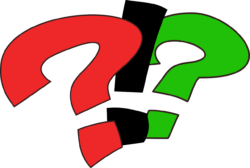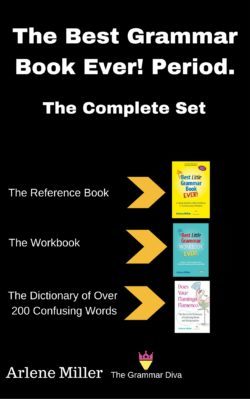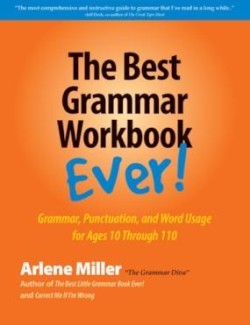Arlene Miller's Blog, page 43
October 26, 2017
Trick or Treat? The Origin of Halloween Words

Trick or Treating
The practice of trick or treating began with the Celtic tradition of celebrating the end of the year by dressing up as evil spirits. The Celts believed that, as we moved from one year to the next, the dead and the living would overlap, and demons would roam the earth again. So dressing up as demons was a defense mechanism. If you encountered a real demon roaming the Earth, they would think you were one of them.
The Catholic Church turned the demon dress-up party into “All Hallows Eve,” “All Soul’s Day,” and “All Saints Day” and had people dress up as saints, angels, and even demons.
Beginning in the Middle Ages children (and sometimes poor adults) would dress up in costumes and go around door to door begging for food or money in exchange for songs and prayers. This was called “souling.”
But trick or treating did not migrate along with Europeans to the United States. It didn’t re-emerge until the 1920s and 1930s. Then, it paused for a bit during World War II because of sugar rations.
The term “trick or treat” dates back to 1927.
The British apparently hate Halloween. In 2006, a survey found that over half of British homeowners turn off their lights and pretend not to be home on Halloween.
Halloween
Halloween also known as Allhalloween, All Hallows’ Eve, or All Saints’ Eve, begins the three-day observance of Allhallowtide, the time in the liturgical year dedicated to remembering the dead.
It is believed that many Halloween traditions originated from ancient Celtic harvest festivals and that such festivals may have had pagan roots. Some believe, however, that Halloween began solely as a Christian holiday, separate from ancient festivals.
In many parts of the world, the Christian religious observances of All Hallows’ Eve, including attending church services and lighting candles on the graves of the dead, remain popular, although elsewhere it is a more commercial and secular celebration. Some Christians historically abstained from meat on All Hallows’ Eve, a tradition reflected in the eating of certain vegetarian foods on this day, including apples and potato pancakes.
The word “Hallowe’en” means “hallowed evening” or “holy evening.” It comes from a Scottish term for All Hallows’ Eve (the evening before All Hallows’ Day).
Jack-O-Lantern
The original jack-o’-lanterns were carved from turnips, potatoes or beets.
People have been making jack-o’-lanterns at Halloween for centuries. The practice originated from an Irish myth about a man nicknamed “Stingy Jack.” According to the story, Stingy Jack invited the Devil to have a drink with him. True to his name, Stingy Jack didn’t want to pay for his drink, so he convinced the Devil to turn himself into a coin that Jack could use to buy their drinks. Once the Devil did so, Jack decided to keep the money and put it into his pocket next to a silver cross, which prevented the Devil from changing back into his original form. Jack eventually freed the Devil, under the condition that he would not bother Jack for one year and that, should Jack die, he would not claim his soul. The next year, Jack again tricked the Devil into climbing into a tree to pick a piece of fruit. While he was up in the tree, Jack carved a sign of the cross into the tree’s bark so that the Devil could not come down until the Devil promised Jack not to bother him for ten more years.
Soon after, Jack died. As the legend goes, God would not allow such an unsavory figure into heaven. The Devil, upset by the trick Jack had played on him and keeping his word not to claim his soul, would not allow Jack into hell. He sent Jack off into the dark night with only a burning coal to light his way. Jack put the coal into a carved-out turnip and has been roaming the Earth with ever since. The Irish began to refer to this ghostly figure as “Jack of the Lantern,” and then, simply “Jack O’Lantern.”
In Ireland and Scotland, people began to make their own versions of Jack’s lanterns by carving scary faces into turnips or potatoes and placing them into windows or near doors to frighten away Stingy Jack and other wandering evil spirits. In England, large beets are used. Immigrants from these countries brought the jack o’lantern tradition with them when they came to the United States. They soon found that pumpkins, a fruit native to America, make perfect jack-o’-lanterns.
Pumpkin
The large round fruit of the creeping cucurbitaceous plants of the genus Cucurbit. They have a thick orange rind, pulpy flesh, and numerous seeds. The word is from the Middle French pompon, Latin peponem (melon), from the Greek pepon (melon), meaning “cooked” (by the sun) or “ripe.”
In American English, the word is also colloquial for a person with hair cut short all around., recorded from 1781.
Witch
In mythology and fiction, a woman believed to practice magic or sorcery, especially black magic. From Old English wicca.
In a c.1250 translation of “Exodus,” witches is used to describe the Egyptian midwives who save the newborn sons of the Hebrews.
Witch doctor is from 1718
Goblin
In folklore a small grotesque supernatural creature, regarded as malevolent towards human beings.
From the early 14th century, “a devil, incubus, fairy”; from Old French gobelin.
Thank you to the following websites:
https://blog.oxforddictionaries.com
Grammar Diva News – Please Read
The Grammar Diva is tired. I have been writing this blog every single week for about five years. Haven’t missed a single week. I am going to take a break! During this November and December, you will be receiving weekly posts as usual, but they will be reposts – “The Best of the Grammar Diva.” In addition I will add some links to interesting word- and grammar-related articles I have seen during the previous week. So please do not unsubscribe! I hope you will be filling my inbox with wonderful ideas for new posts to begin the first weekend of 2018. In the meantime, here is what I will be doing:
Nov. 4 – Redwood Writers Anthology Workshop Grammar Session (open to Redwood Writers only)
Nov. 11 – Featured speaker at Mt. Diablo Writers monthly meeting – Members and guests
Nov. 13 – Reader at Dining with the Authors at Gaia’s Garden reading stories about Sonoma County and stores about the fires. Everyone Welcome! LAD November 2017
Nov. 25 – Featured speaker at Fremont Writers monthly meeting – Members and guests
I am working on my new book: I Wrote a Book: Now What? The Absolute Beginner’s Guide to Self Publishing
I am working on my other new book, a set of three of my books: The Best Little Grammar Book Ever, The Best Little Grammar Workbook Ever, and Does Your Flamingo Flamenco? I have a very rough cover that I have designed, and I would love your comments and suggestions on anything: title, design, whatever!
Happy Holidays from The Grammar Diva!
October 19, 2017
How to Capitalize Titles
Capitalizing titles can be a little confusing because there are actually many ways to do it, depending on what  style you are following. By “titles,” we mean book titles, movie titles, book chapter titles, chapter headings, newspaper headlines, and other such things. Unless you need to follow a specific style, you can do it any way you choose, but — as in all things grammarish — be consistent within the same book or piece of writing.
style you are following. By “titles,” we mean book titles, movie titles, book chapter titles, chapter headings, newspaper headlines, and other such things. Unless you need to follow a specific style, you can do it any way you choose, but — as in all things grammarish — be consistent within the same book or piece of writing.
Most Common Way
1. Here is the most common way of capitalizing titles — and the one you probably learned in school. It is still a safe bet.
Capitalize the first and last words of a heading or title no matter what they are.
Do not capitalize a, an, and the.
Do not capitalize the conjunctions and, but, for, nor, or, so, or yet. (If so or yet is being used as an adverb, capitalize it.)
Do not capitalize prepositions such as up, down, in, out, across, between, with, by, along, and the other zillion.
Capitalize everything else, which includes nouns, pronouns, verbs, adverbs, adjectives, and interjections. Prepositions used as adverbs are capitalized.
Here are some examples of that style:
The Red Fox and the Brown Bear Are Here
The Little Dog Is So Tired, so He Will Take a Nap (first so is an adverb)
The Cat Looked Up As the Dog Raced down the Stairs (first up is an adverb)
Common and Very Similar to the First Way
A very similar style, and the one I learned, is that any word more than four letters long is capitalized, even if it is a preposition. That would mean words like Between, Across, Along, and Under would be capitalized. This is the way I always do it.
And Also Very Similar to the First Way
It is the Chicago Manual of Style method and is exactly like the first way except Yet and So would be capitalized, probably because sometimes they are adverbs and sometimes they are conjunctions, and the “powers that be” probably thought people would get confused, so they decided to capitalize them either way.
Confused yet? I think you will safe if you follow this. To sum it up:
Capitalize the first and last words of any title or heading.
Capitalize all the nouns, pronouns, verbs, adjectives, and adverbs.
Don’t capitalize a, an, or the unless it is the first or last word of the title.
Don’t capitalize the conjunctions and, or, nor, for, yet, so, but.
Don’t capitalize prepositions unless they are longer than four letters. Then you decide.
If you aren’t real up to snuff on which parts of speech are which, capitalize all the important words and all the words longer than four letters.
HINT!!!!! PLEASE remember that the the following words are verbs and are capitalized in titles: Is, Am, Are, Was, Were, Have Been, Be, Will Be, Has Been.
Other Styles
Other styles that are easier have come into use. They are not as commonly accepted, so I might stick with the above suggestions for something formal. But here are some other title styles:
Sentence Style: Used by the Associated Press and some newspapers and online newspapers. Just like in a sentence, you capitalize the first word and any other words that would ordinarily be capitalized, in other words, proper nouns and proper adjectives.
Every Word: Some online publications simply capitalize the first letter of every word in the title.
If you have a short title, and not many titles on a page, you could try capitalizing every letter in the title, especially perhaps on a website.
Or, taking a little different route than the previous one, you could capitalize nothing at all in the title. If you have all the say and this is your creation, be my guest.
ABOVE ALL, BE CONSISTENT!
GRAMMAR DIVA NEWS
Upcoming events and such:
Saturday, November 4, Redwood Writers Anthology Workshop – I will be doing a grammar session.
Saturday, November 11. Mt. Diablo Writers in Pleasanton – I will be the featured speaker talking about “What’s Up with Grammar?”
Saturday, November 25. Fremont Writers – I will be the featured speaker talking about – guess what????
I am currently writing “I Wrote a Book: Now What???? The Absolute Beginner’s Guide to Self-Publishing.” It will begin as an e-book only on Kindle. Print book? Maybe. Hopefully, the book will be available before the end of November.
My next project, out in November or December will be the book set: The Best Little Grammar Book Ever! (second edition), The Best Little Grammar Workbook Ever, and Does Your Flamingo Flamenco? They will still, of course, be sold separately, but they will also be packaged into one book — one-stop shopping for grammar books!
Please follow me on Twitter where I am posting a Word of the Day each weekday morning.
October 13, 2017
Sonoma County Proud
 This post is not about grammar. It is, however, a little bit connected to writing.
This post is not about grammar. It is, however, a little bit connected to writing.
I know that some of my readers live in Northern California, but I know many of you live elsewhere around the world.
This past Sunday evening, as I was just trying to get to bed, a friend texted to ask if I had plans to go anywhere on Monday. I texted back that I had lunch plans in Petaluma. She said there was a fire in Napa. I didn’t know why this would affect my having lunch in Petaluma. I then, of all things, tried out a meditation app on my phone. I thought that the quiet roaring was part of the meditation.
Even with the meditation, I, as usual, couldn’t get to sleep. I don’t remember quite when it was or how I find out, but shortly thereafter I realized what was happening. I couldn’t smell anything at all from my bedroom. But I could hear the wind, and from Facebook or the radio, I figured out something big was going on. I went out to the living room where I could smell the smoke. I eventually packed a bad in case I had to evacuate. I didn’t.
High winds made a small fire in the hills roar at breakneck speed before anyone was ready for it. Of course, there were no extra forces; this was not expected. We are now on Day 5 of this massive fire. I should say fires. There are fires everywhere in Sonoma County, Napa County, Solano County, Mendocino County, Yuba County, Nevada County…
I live in Sonoma County, where Santa Rosa is the largest city. It is wine country. It is beautiful. Santa Rosa is about 8 or so miles north of Petaluma, where I live. Santa Rosa is home to Safari West, a tourist attraction with wild animals. Thank goodness, all the animals were rescued. Santa Rosa is also the home of cartoonist Charles Schulz’s ice rink, Snoopy’s Home Ice. It lost power and for the first time in its history since it was built in 1969, the ice melted. They called out for a generator, and because the people in Sonoma County are beyond kind, generous, and helpful, a big generator was delivered. Unfortunately, his house (he passed away, but his widow lived there) was burned to the ground with all the memorabilia. Fortunately, most of the memorabilia is in the museum, located near the rink, and so far, they are still OK. Thank goodness, his widow, a local philanthropist, escaped unharmed. We have lost many of our wineries and restaurants. Santa Rosa has lost nearly 5% of its houses! 3924 houses at last count, and 410,000 square feet of business space.
And fires are still raging. Help has been enlisted from as far away as the Carolinas and Australia. This included a Boeing 747 dropping flame retardant. Winds started the spreading. Winds were predicted for the last two nights. They didn’t materialize. Winds are again predicted for tonight and the weekend. We pray they don’t materialize. I am still on watch for evacuation. My car is packed and has been for days.
So far . . . I am one of the lucky ones. I am connected to two large communities, of which most of the people live in Santa Rosa: my writing club and the ice rink (my daughter is a professional skater, and I spent many, many, many hours at that rink). So many of my writer friends and skating friends and acquaintances have lost homes, or have friends or relatives who have. It is terrible. My heart breaks for them.
The community has come together as I have never seen. People have stepped up to volunteer and donate. Restaurants are giving free food. Gyms are open for free showers. Hair salons are giving shampoos and blow dries. Comcast is giving free cable. Our local bookstore is a place for evacuated people to come to charge their phones, and hang out with their dogs. A local bar has laptops for use. I could go on and on.
My writing club puts out an anthology every year with short pieces. There is always a theme. This year it was Sonoma County. The anthology just came out, and it is so poignant that these stories honor this county, now in such a sad place. In fact, I wrote a piece about the ice rink. E-mail me if you would like a copy of my piece. The anthology is available on Amazon if you want to read about our beautiful county.
The Santa Rosa fire is now 25% contained, which is actually good news for us. The air is smoky, and we are advised to wear masks, which are tough to find, of course! School has been out all week – some schools have burned. But we are Sonoma County Proud. Pray for us.
October 5, 2017
I’m Possessed!
 Although Halloween is coming, this post is not about that kind of possession (sorry). It is about possessives. I have written about possessives before, but when I write about something again, I like to look it from a different perspective than previously, or add new information, or present the information in a different way. So here you go: Everything you have wanted to know—or need to know—about possessives.
Although Halloween is coming, this post is not about that kind of possession (sorry). It is about possessives. I have written about possessives before, but when I write about something again, I like to look it from a different perspective than previously, or add new information, or present the information in a different way. So here you go: Everything you have wanted to know—or need to know—about possessives.
Obviously, possessives imply ownership; they are not to be confused with plurals. Plurals are just more than one, and you don’t usually use an apostrophe in them. Possessives usually have an apostrophe.
When we talk about possessives, we are talking about only nouns (things or people) and pronouns (words that stand in for things and people). Nothing else has a possessive. Possessive nouns all have apostrophes. Possessive pronouns do not ever have apostrophes.
To make the possessive of a singular noun, all you do is add an apostrophe and an s : the cat’s toy, the girl’s hair; Joe’s book. Things, not just animals and people, can also be made possessive: the book’s title, the school’s auditorium.
To make the possessive of plural nouns that do not end in s, you also add an apostrophe and an s : the men’s team, the children’s jackets. One issue is men’s room. We usually say ladies room or ladies’ room or even lady’s room. The first isn’t possessive at all. The second is a plural possessive, meaning it belongs to all the ladies. The third is a singular possessive, I guess meaning it belongs to each lady separately. All are OK. However, you can’t really do the same with men. It is the men’s room. The equivalent of saying ladies room (no possessive) is men room. That doesn’t sound quite right. But mens isn’t a word (double plural????). The equivalent of saying ladies’ room is men’s room (plural possessive). The equivalent of saying lady’s room (singular possessive) is saying man’s room, which again sounds bizarre. So I would stick with men’s room. Oh, the same goes for women’s room. Womens room is wrong, as is woman’s room.
Plural nouns, which usually end in s , are made possessive by simply adding an apostrophe at the end: the boys’ toys (belonging to more than one boy), the highways’ tolls (more than one highway), the neighbors’ phone numbers (more than one neighbor).
Singular nouns that end in s already, whether they are common nouns or proper nouns, generally add apostrophe s . Many of us learned in school that you just add s , but it appears that the accepted way to write them is to add both the apostrophe and the s , usually the way they are pronounced: the bus’s schedule, my boss’s desk, Thomas’s train, Frederick Douglass’s biography, the princess’s shoe. The plural possessive of those: the buses’ schedule, my bosses’ desks, the princesses’ shoes. Sometimes you’ll have a name, for example, Miles, where you might just add the apostrophe because you don’t pronounce it Miles’s. Or maybe you do, so you can also write it that way.
Exceptions to that last rule include Jesus. (Jesus’). And I would then assume, Moses (Moses’). Also, words or names ending in an es that sounds like ez get just an apostrophe for the possessive: Socrates’, Hippocrates’.
Possessive pronouns, on the other hand, have no apostrophes: ours, hers, his, yours, theirs . . . and of course its.
Be careful with last names. You can make them plural. You can make them possessive. You can make them plural possessive. Let’s take Green as a last name. Make it plural: The Greens live next door. Make it singular possessive: Mike Green’s car is in the driveway. Make it plural possessive: We are going to the Greens’ house for dinner. How about Jones? Here come all the Joneses. Earl Jones’s car was hit. The Joneses’ basement flooded. Sometimes you just have to figure out how to make a last name plural. How about Fernandez? Fernandezes? In this case, I might just say the Fernandez family. So, when you have a sign made for your porch, it is best to say The Garcias. . . . not The Garcia’s. The Joneses . . . not The Jones’ or The Joneses’.
What about “double possessives”? Shirley and Ed’s car? Yes, if it belongs to both of them jointly, use just one possessive. But Shirley’s and Ed’s cars, meaning you are talking about the car that belongs to Shirley and the car that belongs to Ed.
Nuff said about that.
Grammar Diva News:
Do you follow me on Twitter? I have started a new daily post (Monday through Friday) called Word of Today. Check it out.
My next book is an e-book on self-publishing. No cover yet. I am hoping to have it out by the end of November. I know . . . there are lots of self-publishing books, but like my other books, this one will be pretty simple and friendly. I have been through the process nine or ten times now, so . . . Tentative Title: I Wrote a Book – Now What? The Beginner’s Guide to Self-Publishing
November will be a busy month for me:
November 4 – Conducting a grammar workshop for Redwood Writers Anthology Class.
November 11 – Presenting a grammar talk to the Mt. Diablo Writers.
November 25 – Presenting a grammar talk to the Fremont Writers.
Oh, and October 16, I am scheduled to read my contribution to the 2017 Redwood Writers Anthology at Dining with Local Authors in Santa Rosa.
Contact me for more info.
September 28, 2017
Some “Lost” Words and a Newspaper “Mess”
 Originally, this post was going to be about 30 “lost” words from the English language that academics have uncovered and think you might want to use. This post is still about that. However, a friend of mine (thank you, Robin) “uncovered” a blurb from the Washington Post (yup) online this morning that can only be described as YUCK! To their credit it took them only about 15 minutes to fix it. So please do get to the end of the post where you can look at that blurb. That is why I always tell my audience, the Internet is forever. Once it is posted up there . . .
Originally, this post was going to be about 30 “lost” words from the English language that academics have uncovered and think you might want to use. This post is still about that. However, a friend of mine (thank you, Robin) “uncovered” a blurb from the Washington Post (yup) online this morning that can only be described as YUCK! To their credit it took them only about 15 minutes to fix it. So please do get to the end of the post where you can look at that blurb. That is why I always tell my audience, the Internet is forever. Once it is posted up there . . .
Dominic Watt, senior linguistics lecturer at the University of York (England, that is), hopes that people will embrace these rediscovered words. They are all words about either deception, emotions, or personality/behavior.
Ambodexter – (not to be confused with ambidextrous!) One who takes bribes from both sides
Awhape – To amaze, stupefy with fear, utterly confound
Betrump – (Seriously????!!!! Hey, I didn’t make this up!) To deceive, cheat, elude, slip from
Coney-catch – To swindle, cheat, trick, dupe, deceive
Dowsabel – A sweetheart, lady-love
Ear-rent – The figurative cost to a person of listening to trivial or incessant talk
Fumish – Hot-tempered, irascible, passionate
Hugge – To shudder, shrink, shiver, or shake with fear or cold
Hugger-mugger – Concealment, secrecy
Losenger – (Not a cough drop) A false flatterer, a lying rascal, a deceiver
Man-millinery – Suggestive of male vanity or pomposity
Merry-go-sorry – A mixture of joy and sorrow
Momist – (Well, we can see where this one comes from!) A person who habitually finds fault; a harsh critic
Nickum – A cheating or dishonest person
Parget – To daub or plaster (the face or body) with powder or paint
Peacockize – To behave like a peacock, to pose or strut ostentatiously
Percher – A person who aspires to a higher rank or status; an ambitious or self-assertive person
Quacksalver – A person who dishonestly claims knowledge of or skill in medicine; a pedlar of false cures
Rouker – A person who whispers or murmurs; one who spreads tales or rumors
Rouzy-bouzy – Boisterously drunk
Ruff – To swagger, bluster, domineer; to brag or boast
Sillytonian – A silly or gullible person, one considered as belonging to a notional sect of such people
Slug-a-bed – One who lies long in bed through laziness
Snout-fair – Having a fair countenance; fair-faced, comely, handsome – Proud, haughty, rich, splendid, fine, magnificent
Stomaching – Full of malignity, given to cherish anger or resentment
Swerk – (Not to be confused with twerk) To be or become dark, gloomy, troubled, or sad
Teen – (Does this come from what it seems to?) To vex, irritate, annoy, anger, enrage, to inflict suffering upon
Tremblable – Causing dread or horror
Wasteheart – Used to express grief, pity, regret, disappointment, or concern
Thanks to this website (click) for all the definitions. Only the comments in parentheses are my own!
AND NOW: How many mistakes can you find in this, from the Washington Post?
U.S. to slash embassy staff in Cuba, warn travelers of hotel attacks There move comes after several diplomats stationed in Havana were stricken with a mysterious illness, and it marks a blow to already-fragile relations between the United States and Cuba. The embassy will lose more than half of its U.S. staff and will stop processing visas in Cuba indefinitely, U.S. officials said.
I see six mistakes:
United States should be spelled out when it is used as a noun, as it is at the beginning of the first sentence.
I don’t think the travelers of hotel attacks (which makes no sense anyway) are doing the warning. So there should probably be a period or semicolon after Cuba, and warning should probably have a subject.
Where is the period after attacks?
There??????
The antecedent of it is a little unclear, but I suppose it is move.
Already-fragile? I don’t think we need the hyphen.
Have I missed anything?
September 21, 2017
National Punctuation Day: 8 Common Punctuation Mistakes
Sunday, September 24 is National Punctuation Day. 
What better way to celebrate than to use punctuation correctly? I have written many posts about various punctuation marks, and I will link to some of them in this post. Here are eight common punctuation mistakes:
The overuse of dashes and the use of hyphens to stand in as dashes. Dashes are used to set off an abrupt change of thought in a sentence. There are two types of dashes: the long one is used as described in the previous sentence, and the short one is used as the minus sign and in number ranges. The hyphen is the shortie and is used between parts of compound words. Here is last week’s post that talks about dashes and hyphens.
Confusing colons (:) and semicolons (;). I often see a semicolon used where a colon should be used. I suspect it is because many people don’t really understand semicolons. When you are going to list some things after a sentence, for example, use a colon. A colon indicates some type of list or explanation follows. Semicolons don’t do that at all.
The comma splice is a bad thing. Please do not separate your sentences with a comma unless you also have a conjunction in there (and, but, so, for, or, nor, yet). You need to use a period, a semicolon, occasionally a colon, or a comma WITH a conjunction to separate two sentences, commas cannot separate sentences. (See????)
British and American English differ in some ways. One of these ways is in the use of other punctuation marks with quotations marks. In American English, periods and commas ALWAYS go inside quotation marks. Colons and semicolons always go outside quotation marks. Question marks and exclamation points can go either way depending on the use.
Some people don’t like commas. They feel that they are unnecessary blemishes in their writing, so they don’t use them even when they should. Other people love commas, and they sprinkle them in their writing like salt. Every time they envision a slight pause in a sentence, they throw in a comma. Don’t. There are lots of comma rules and places to put commas. Don’t put unnecessary commas in writing, for example, between a subject and a verb: Joe and his friends, especially like horror movies, so they are going to the movie, at the new theater, this weekend. (That sentence needs only one of those commas. The rest are incorrect.)
Oy! Apostrophes! Apostrophes are mostly used in contractions and in possessives. They are rarely used in plain old plurals. Please don’t use them in plural’s!
I am guilty of this one. Sometimes I get carried away with punctuation at the end of my sentences!!!! Yup, it’s true. I wouldn’t put multiple punctuation marks at the end of a sentence in something like a business letter, but sometimes to make a point (or show emotion), I will double or triple up on my exclamation points. Some people like to use an exclamation point AND a question mark at the end of sentences. In formal writing, please refrain. In texts go for it!!!!!
Fear of the semicolon. Don’t be afraid of the semicolon. It is probably the simplest of all punctuation marks except for maybe the period. Semicolons really have only two uses. The most common is to separate two sentences that are closely related for a nice change from always using a period. Besides, using semicolons makes you look smart (as you are!). If sentences are closely related, you can use a semicolon; in fact, the semicolon is my favorite punctuation mark. The other use of a semicolon is to “unconfuse” a confusing series or compound sentence where there are already commas: I will visit Boston, Massachusetts; Ithaca, New York; Lewiston, Maine; and Burlington, Vermont on my tour of New England.
There you have it. So celebrate National Punctuation day with a toast to your favorite punctuation mark.. And thank you, Jeff Rubin, for inventing this day!
Grammar Diva News
So what’s going on over here?
I wrote a piece for my writing club’s (Redwood Writers) annual anthology. This year the theme was Sonoma County (California). I generally don’t write short pieces, but I was inspired with this theme; I wanted to write about our famous ice rink, built by Peanuts cartoonist Charles Schulz. My daughter skated there for 12 years—every day—until she went off to skate for Disney on Ice, where she still is, now in her 10th year. I will be reading my piece, “Santa Rosa on Ice,” at the Anthology Launch this Sunday, which coincidentally is National Punctuation Day.
I have been busy with having my daughter and son-in-law home for a while (Yay!!!). I haven’t gotten as much work done as I should have. However, they are going on tour next week, and I will be sitting alone at my desk (alone again) working my fingers to the bone. My next projects are a self-publishing guide (yes, I know many people have already written one, but mine will be very simple for the beginner, using my self-publishing journey as a reference) and a “book set” of three of my books. I will be combining The Best Little Grammar Book Ever (second edition), The Best Little Grammar Workbook Ever, and Does Your Flamingo Flamenco? into one volume. Who says you can’t have it all? Of course, the books will still be for sale individually.
Speaking of my books, another plea for reviews—reviews do sell books. So if any of you have any of my books hanging around, unreviewed, please consider writing a short review (of any number of stars) on Amazon or Goodreads. I know you aren’t supposed to use “thank you in advance,” but thank you in advance.
I guess that is enough for now. Oh, if you have any suggestions for blog topics, please let me know.
September 15, 2017
The Long and Short of It: Dashes and Hyphens
 When I copyedit, I see all kinds of lines and spaces that are supposed to be dashes. And, as I am probably guilty of myself, the overuse of the mighty dash. But this post is not about appropriate use of dashes or how many you use…
When I copyedit, I see all kinds of lines and spaces that are supposed to be dashes. And, as I am probably guilty of myself, the overuse of the mighty dash. But this post is not about appropriate use of dashes or how many you use…
This post is about the difference between the hyphen, the en dash, and the em dash—and how to make them on your keyboard. By the way, there is generally no space around hyphens or dashes.
Hyphen: This is the short one that you will find on your number pad or the top row of your keyboard. I have a Mac Air, and on my keyboard it is on the top row. Hyphens are used in some compound words and to divide a word at the end of a line. Only one keystroke is required to make a hyphen. Examples: Self-taught, ex-husband.
En Dash: This is the medium-length line that requires a little more work to create. The en dash is used for minus signs and date ranges. However, many people use it as a long dash, which it isn’t. Many people type two hyphens in a row to create any a dash. Sometimes your computer will put them together to make something longer than a hyphen; sometimes it won’t. The most frequent place to find en dashes is in indexes (page ranges) and math books (minus signs). The en dash is made on my Mac is by holding down the alt (or option) key and pressing the hyphen. Examples: 1950–1960, 20–10=10.
Em Dash: This is the long dash that is used in text. Technically, it is used to indicate a big break in thought in a sentence. It is longer than the en dash. The hyphen requires one keystroke, the en dash requires two keystrokes, and the em dash requires three keystrokes, at least on my keyboard. To make an em dash, hold down the shift key and the alt (option) key, and then press the hyphen. Example: I finally found my glasses—they were underneath the sofa cushion—after getting along fine without them for three weeks. Hint: Make sure your em dashes are in the correct places in your sentence by reading the sentence without the text that is within the dashes. The sentence should make sense.
Why are they called en and em dashes? They are measurements in typography: An em is a unit equal to the currently specified point size. For example, one em in a 16-point typeface is 16 points.
****September 24 is National Punctuation Day, so next week we will have a special post about punctuation!****
And now a few favors to ask:
If you are not already a subscriber to this blog, why not subscribe? It’s free and you get a free book download.
If you have any of my books, an Amazon review is greatly appreciated. Reviews sell books!
If you have any ideas for future blog posts, please let me know!
September 7, 2017
Word-Storm Ahead
 Our thoughts and prayers go out to those affected by Hurricanes Harvey and Irma (and we hope Jose dwindles down to nothing). I have put some links to places where you can donate at the end of this post.
Our thoughts and prayers go out to those affected by Hurricanes Harvey and Irma (and we hope Jose dwindles down to nothing). I have put some links to places where you can donate at the end of this post.
Categories of Storms: What Do They Mean
We all hear about the different categories of tropical storms and hurricanes. What do they mean?
They are measured by the Saffir-Simpson Hurricane Wind Scale — a 1 to 5 rating based on a hurricane’s sustained wind speed. This scale also estimates potential property damage. Hurricanes reaching Category 3 and h
igher are considered major hurricanes because of their potential for significant loss of life and damage. Category 1 and 2 storms are still dangerous, however, and require preventative measures.
Category
Sustained Winds
Types of Damage Due to Hurricane Winds
1
74-95 mph
64-82 kt
119-153 km/h
Very dangerous winds will produce some damage: Well-constructed frame homes could have damage to roof, shingles, vinyl siding and gutters. Large branches of trees will snap and shallowly rooted trees may be toppled. Extensive damage to power lines and poles likely will result in power outages that could last a few to several days.
2
96-110 mph
83-95 kt
154-177 km/h
Extremely dangerous winds will cause extensive damage: Well-constructed frame homes could sustain major roof and siding damage. Many shallowly rooted trees will be snapped or uprooted and block numerous roads. Near-total power loss is expected with outages that could last from several days to weeks.
3
(major)
111-129 mph
96-112 kt
178-208 km/h
Devastating damage will occur: Well-built framed homes may incur major damage or removal of roof decking and gable ends. Many trees will be snapped or uprooted, blocking numerous roads. Electricity and water will be unavailable for several days to weeks after the storm passes.
4
(major)
130-156 mph
113-136 kt
209-251 km/h
Catastrophic damage will occur: Well-built framed homes can sustain severe damage with loss of most of the roof structure and/or some exterior walls. Most trees will be snapped or uprooted and power poles downed. Fallen trees and power poles will isolate residential areas. Power outages will last weeks to possibly months. Most of the area will be uninhabitable for weeks or months.
5
(major)
157 mph or higher
137 kt or higher
252 km/h or higher
Catastrophic damage will occur: A high percentage of framed homes will be destroyed, with total roof failure and wall collapse. Fallen trees and power poles will isolate residential areas. Power outages will last for weeks to possibly months. Most of the area will be uninhabitable for weeks or months.
Different Types of Wind and Water Storms
The following are some of the most common types of damaging storms in the United States:
Hail Storms
Hailstorms do the greatest amount of damage to the exterior of your home or property: roof damage, siding damage, shingle damage, window damage, and automobile damage.
Thunderstorms
Thunderstorms can produce lightning, hail, tornadoes, flooding, and more.
Ice Storms
Ice storms produce freezing rain that coats everything in its path with a layer of glaze ice. Generally speaking, if a storm causes accumulation of more than a quarter inch on exposed surfaces, the storm can be classified as an ice storm. This type of accumulation can cause broken tree branches, power outages, and other hazardous conditions.
Tornadoes
For many areas around the United States, damage from severe tornadoes presents a very real threat. Most tornado damage is done by high winds with recorded speeds exceeding 300 MPH and the flying debris propelled by these fierce winds. The most damage from tornadoes happens in “tornado alley” — a part of the United States that includes Oklahoma, Texas, Kansas, and Missouri.
Lightning
You may be surprised to learn that lightning is a major cause of storm damage in many areas around the country. The National Lightning Safety Institute estimates the cost of lightning damage in the $5 to $6 billion dollar per year range. Lightning that hits trees and the ground is a common cause of wildfires, structure fires, property damage, and power outages.
Heavy Snow / Blizzards
Blizzards are severe winter storms that combine heavy snowfall, with high winds and freezing temperatures. The combination of cold, wind, and snow damages homes, businesses, and automobiles. Heavy snow can produce dangerous conditions, including roof collapse.
Floods
Floods are typically the result of heavy rain and water that rises faster than storm drains can handle. Flash floods driven by quick, violent bursts of rain can flood homes, basements, and businesses, causing serious damage to both interiors and exteriors. Flooding is a very dangerous storm phenomenon that results in numerous deaths and extensive property damage each year.
Derecho Storms
A derecho is a large, violent, fast-moving, complex of thunderstorms that follow one another along a path of at least 240 miles, with wind gusts of at least 58 mph. Although derechos are very difficult to predict, they often form along the boundary of a large, hot air mass near a jet-stream air current.
Tropical Storms
A tropical storm is a type of storm system that develops in tropical environments. These storms are characterized by extremely low pressure systems and high-speed, swirling winds. In order for a storm to be classified as a “tropical storm,” a specific set of circumstances must exist. In order to be a tropical storm, the wind speed must be between 39 and 73 miles per hour. Lower or higher wind speeds would be another classification (lower: tropical depression, higher: hurricane).
Hurricanes
A hurricane is the most powerful classification given to a tropical cyclone. Characterized by low barometric pressure systems, extremely high winds, heavy rainfall, and storm surges and swells, hurricanes that make landfall can be extremely destructive.
What Does FEMA Stand For and What Does It Do?
FEMA (Federal Emergency Management Agency) supports the citizens and first responders who work to build, sustain, and improve our capability to prepare for, protect against, respond to, recover from, and mitigate all hazards.
Climactic Versus Climatic
Many people get these two words confused. Climactic comes from climax. Climatic comes from climate. So when we are talking storms, we are usually talking about climatic.
How Are Hurricanes Named?
Ever wonder how hurricanes get their names? And why do hurricanes have names at all? Meteorologists long ago learned that naming tropical storms and hurricanes helps people remember the storms, communicate about them more effectively, and so stay safer if and when a particular storm strikes a coast. These experts assign names to hurricanes according to a formal list of names that is approved of prior to the start of each hurricane season.
Most hurricanes were originally designated by a system of latitude-longitude numbers, which was useful to meteorologists trying to track these storms. Unfortunately, this system was confusing to people living on coasts seeking hurricane information.
In 1950 a formal practice for storm naming was first developed for the Atlantic Ocean by the . At that time, storms were named according to a phonetic alphabet (e.g., Able, Baker, Charlie), and the names used were the same for each hurricane season; in other words, the first hurricane of a season was always named “Able,” the second “Baker,” and so on.
In 1953, to avoid the repetitive use of names, the system was revised so that storms would be named after female names. By doing this, the National Weather Service was mimicking the habit of naval meteorologists, who named the storms after women, much as ships at sea were traditionally named for women.
In 1979 the system was revised again to include both female and male hurricane names.
Atlantic are: Arlene, Bret, Cindy, Don, Emily, Franklin, Gert, Harvey, Irma, Jose, Katia, Lee, Maria, Nate, Ophelia, Philippe, Rina, Sean, Tammy, Vince, and Whitney. The Atlantic hurricane season runs from June 1 to November 30
Where to Donate

Other Places to Donate and Avoid Scams
Thank you to the following websites for providing information!
List of 40 Highly Rated Places to Donate
September 1, 2017
Ouch! My Ears!
 I don’t know about you, but since the November election (and before it as well), I have been watching a fair amount of cable TV news. I really haven’t watched any network news, so I can’t really speak to that — but these are smart people on cable news, both the show hosts and the pundits. But sometimes my ears hurt by their use of the English language.
I don’t know about you, but since the November election (and before it as well), I have been watching a fair amount of cable TV news. I really haven’t watched any network news, so I can’t really speak to that — but these are smart people on cable news, both the show hosts and the pundits. But sometimes my ears hurt by their use of the English language.
Before I continue with my gripes, I do have to say something. Most of us haven’t learned any grammar since probably seventh or eighth grade, and for many of us, that was a really long time ago. Most of what I know, I learned from teaching 7th grade English and from copyediting other people’s writing. So, in a way, it is not surprising that people would maybe make some mistakes unless they are grammar nuts like I am. On the other hand, though, some of these are pretty well-known “no-nos”!
Me and him???? Really? I hear this one a lot — as a sentence subject. I have no idea why people persist in this usage. First of all, me and him aren’t subject pronouns. Second, out of politeness, me comes last. These same people are of course using I as an object pronoun: Him and his lawyer gave the news to Jim and I. Nice.
Myself is still being abused. Myself is used properly pretty much only when I am the subject: I talked to him myself. I myself spoke to her. Not He told it to Jane and myself. Or My fellow journalists and myself wrote about it last week.
The confusion about like versus as and as if is another common “mistake.” I put mistake in quotes because the distinction is largely ignored these days. Look at last week’s blog post for more information about this one. Basically, like is often used when as if or as should be. Like I said last night should be As I said last night.
These little slip-ups concern me. I find them of concern. But I don’t find them concerning. What’s with that? Last time I looked up concerning (likely the last time I wrote about this issue), it was still a form of the verb concern. It was not really an adjective (although it is a participle). Therefore, I don’t like the sentence, This is concerning. Translation: This is of concern. I suppose that first construction is now so common that it will become (or already has become) acceptable.
But who am myself to say?
If you have heard any “grammar abuses” on the news, please write and tell me about it by e-mail or in the comments section here. Thank you!
Grammar Diva News
Check out my news release about Does Your Flamingo Flamenco? By the way, I will be giving away 5 copies of this book on Goodreads, and I think the deadline to sign up is September 5.
The issue with Amazon that I was having last week, I have now learned, is a “thing.” Amazon’s policy on third-party sellers changed in March, and many are upset and have written articles about it. Where have I been?
August 24, 2017
Like, As If . . .
 There is difference between like and as if. However, no one pays much attention to it anymore except the most “conservative” of us grammar people.
There is difference between like and as if. However, no one pays much attention to it anymore except the most “conservative” of us grammar people.
Here is the standard:
Like is a preposition. That means it has an object. Objects are nouns or pronouns: He acts like a clown.
As if/as is a conjunction and is used before a clause. A clause contains a subject and a verb: He acts as if he thinks he is funny.
Easy, right?
I guess the whole thing started with that old cigarette ad that some of you might remember (this is back when TVs were black and white and showed cigarette commercials): Winston tastes good like a cigarette should.
Now, going by the “rules,” the correct way to say this is Winston tastes good as a cigarette should. (Or Winston tastes like a cigarette!)
Winston tastes good as a cigarette should doesn’t even sound right, does it? I am not sure if it sounds a little off because we are so used to hearing it said and seeing it written “wrong,” or if it just doesn’t sound quite right. In fact, when I am copyediting, I sometimes let the “incorrect” like go if I feel that it actually sounds better in a certain sentence — this is certainly true in dialogue, but even in fictional (mostly) narrative. In nonfiction, I am more likely to stick with the standards.
Well, here is a fly in the ointment: A simile is a comparison using like or as. You might remember that from school. You were probably learning the difference between similes and metaphors. Metaphors are comparisons without like or as.
Here are some idiomatic similes:
Blind as a bat.
Dumb as a rock.
Sharp as a tack.
Quiet as a mouse.
She slept like a log.
He eats like a pig.
He slept like a baby.
Very odd. Most of the common ones we know use as — and begin with an adjective — even though there is just a noun (not a clause) after them. And the ones at the end of the list — the ones that use like — are still followed by just a noun, but notice that they have a subject and verb in front of them — they are complete sentence similes. I don’t know why, or if there is a “why.” I haven’t found the why yet, and I think it would take quite a bit of research to find it.
We could talk about the “missing” verb. Here is an example of what I mean by a missing verb:
She likes chocolate more than me. (She likes chocolate more than she likes me.)
She likes chocolate more than I. (She likes chocolate more than I do.)
The missing verb in the similes using as is is:
Blind as a bat is.
Dumb as a rock is.
Sharp as a tack is.
Quiet as a mouse is.
The missing verb in the similes using like are action verbs:
She slept like a log sleeps. (She slept as if she were a log!)
He eats like a pig eats. (He eats as if he were a pig!)
He slept like a baby sleeps. (He slept as if he were a baby!)
Interesting food for thought. Any opinions?
As a final piece of advice, as a grammarian, I would try to stick by the standards in my writing. Like is a simple comparison followed by a noun or pronoun. As/as if is a conjunction and is followed by a subject and a verb.
Grammar Diva News
So, does anyone know how to win a fight with Amazon, who runs the world? Here is the issue I have been dealing with:
The Best Grammar Workbook Ever!
The Best Grammar Workbook Ever!
As you can see, the first link goes to a page where it says the book is not eligible for Amazon Prime, and the book is sold by a third-party seller. You get here by searching on Amazon for the title of the book.
The second link goes to a page where it says the book is eligible for Prime, sold by Amazon, is over a dollar less expensive, and is shipped more quickly. You get here by searching Amazon for grammar workbooks and limiting the search to Prime.
Which one would you buy? So I have been talking to Amazon for days, and no one can explain the Amazon algorithms to me. All I know is people buy Amazon Prime, and they don’t want to go clicking around to find it, so this is bad for my sales. This is my bestselling book. It is the ONLY one of my books not obviously Prime. And it is the ONLY grammar workbook that shows up on the first page of a grammar workbook search that is not immediately and obviously Prime.
The reason given to me is that Amazon gives the Buy Box to any seller who gives a better customer experience. Do you think paying more and waiting longer for shipping is a better experience? I don’t either.
Does anyone know how to win a war with Amazon?
Well, anyway, if you want that grammar book, I would suggest you follow the second link!





